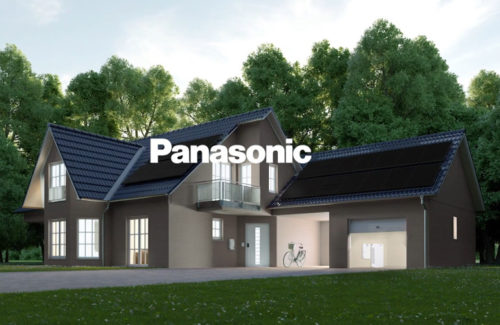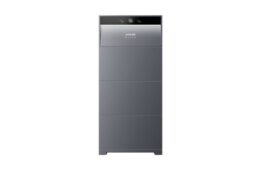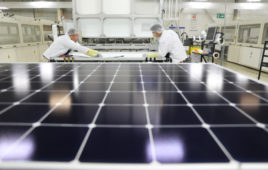To clear up any confusion — Panasonic is not exiting the solar market. The almost-100-year-old company has made a strategic decision in the solar space to design an ecosystem of residential energy products instead of focusing exclusively on manufacturing. Consumers and its network of installation dealers can still depend on Panasonic for solar panels, batteries and other energy management products — the only difference is that the company is using an original equipment manufacturer (OEM) to make its products now.
Panasonic announced earlier this year that it would end production at its Malaysian and Japanese factories by March 2022, instead shifting its solar panel manufacturing to a subcontracted partner. Solar Power World spoke exclusively with Mukesh Sethi, director of solar and energy solutions at Panasonic, about this business pivot. He explained the decision as just following manufacturing trends in the industry.
A pioneer in the heterojunction technology (HJT) panel manufacturing space, Panasonic’s long-running line of HIT panels used in-house manufactured cells from smaller 125-mm/5-in. wafers for 96-cell panels in the same footprint as other brands’ 60-cell modules. The past few years have seen an acceleration of new technologies and larger wafer adoption across the industry, leading to Panasonic making the decision to outsource its manufacturing and retire its HIT line of panels using smaller cells.
Panasonic’s newest line of modules under the EverVolt brand still use HJT but with larger half-cut cells to be more uniform with the rest of the industry. As likely the last company still using the smallest wafer size, it was a smart business decision to get on board with larger, more mass-produced solar wafers.
Panasonic’s biggest U.S. dealership model competitor SunPower followed a similar path in 2020. SunPower also manufactured a 96-cell panel before shuffling its manufacturing efforts to new company Maxeon. SunPower is now focusing on installation and designing a suite of energy products, while selling SunPower-branded modules made by Maxeon with larger cells.
Sethi wanted to reiterate to the industry that everything about Panasonic is staying the same in the solar space — same 25-year warranty, same dedication to product quality, same service model. Here he answered a few more questions for Solar Power World.
SPW: What’s the background on Panasonic’s manufacturing announcements?
Sethi: That announcement was made in early 2021, where Panasonic said it would no longer be making solar panels and we’ll move to an OEM model, which created confusion among customers and stakeholders that we are exiting the solar business altogether, which is obviously not true. This is just a change in strategy. We’re not exiting anything.
There are so many companies, big household brands, that are already doing this kind of stuff. They design the products and sell the products without manufacturing them themselves. Most consumers don’t see that. All they see is a brand name and not necessarily what steps go into making the product.
SPW: Why did Panasonic decide to outsource its panel manufacturing?

Credit: YouTube
Sethi: We have been the pioneer in heterojunction technology, making panels for the past 25 years. We have made considerable progress in efficiency and output over time. We have increased our manufacturing capacity so many times by opening new production lines and facilities, but over the past two to three years, the solar industry has changed considerably. The cost of solar panels and cells have dropped, and new technologies have emerged, requiring big upfront investments in bigger cells. So instead of focusing on manufacturing the solar panels, which has become a low-margin business category now with the ever-falling prices and changing technologies, making it difficult for manufacturers to keep up with the continuous investment in new machinery, we have decided to outsource the manufacturing so we can just focus on designing and selling the product. This will allow us to bring the latest technology in solar panels made by a third party at competitive prices, along with other energy products that are part of residential energy solutions. It’s not just the panels we want to focus on. We want to go beyond the panels and focus on the entire ecosystem of energy products, which work together very well and are designed, developed and sold — but not manufactured — by Panasonic.
SPW: What is Panasonic’s focus going forward?
Sethi: Nothing has changed for our dealers. The only thing that has changed is the panels are not made in our own factories. Our focus has always been in residential energy business. We’re moving from solar product manufacturer toward becoming a complete energy solution provider that designs energy products and solutions, including solar panels, inverters and energy storage. We envision an ecosystem of best-in-class solutions, controlled and managed by AI software that can manage the needs of the homeowner and integrate with the utilities and energy aggregators. You want all products coming from one brand working together very well. If a homeowner is buying product, they don’t want to buy five different brands in the energy solution system. They want one brand like they do for their phones and consumer electronics in their house. Energy products will be similar.





Where is Panasonic solar panels manufactured?
Nobody answers that question
It’s kind of an open secret that REC now manufactures Panasonic modules. Their HJT panels are basically identical, and super high quality as well!
Panasonic will prevail if Japanese spirit of perfection will be preserved. It is only way for this awesome brand. Hard work and their own perfect factories is an only long term solution!!
“Panasonic’s newest line of modules under the EverVolt brand still use HJT but with larger half-cut cells to be more uniform with the rest of the industry. As likely the last company still using the smallest wafer size, it was a smart business decision to get on board with larger, more mass-produced solar wafers.”
What folks don’t remember it was Sanyo that brought the HIT panels to market about 1999. Sanyo was also the first to make a bifacial solar PV panel. Back in 2005 retail for the Sanyo 200 watt panels was running $1,100 per panel or $5.50/watt. The bifacial panels were considered boutique and were used in patio or other shade structures in high end homes. Sony fell to the onslaught of the Chinese panel manufacturers and low cost per watt of these Chinese panels. Sanyo ended up in bankruptcy and sold their IP to Panasonic. The move towards larger solar PV cell wafers and the move to wire cutting making thin cells does present a problem with total cell and panel yield and also can allow mechanical stresses that will cause cracking and early cell failure. There is no free lunch.